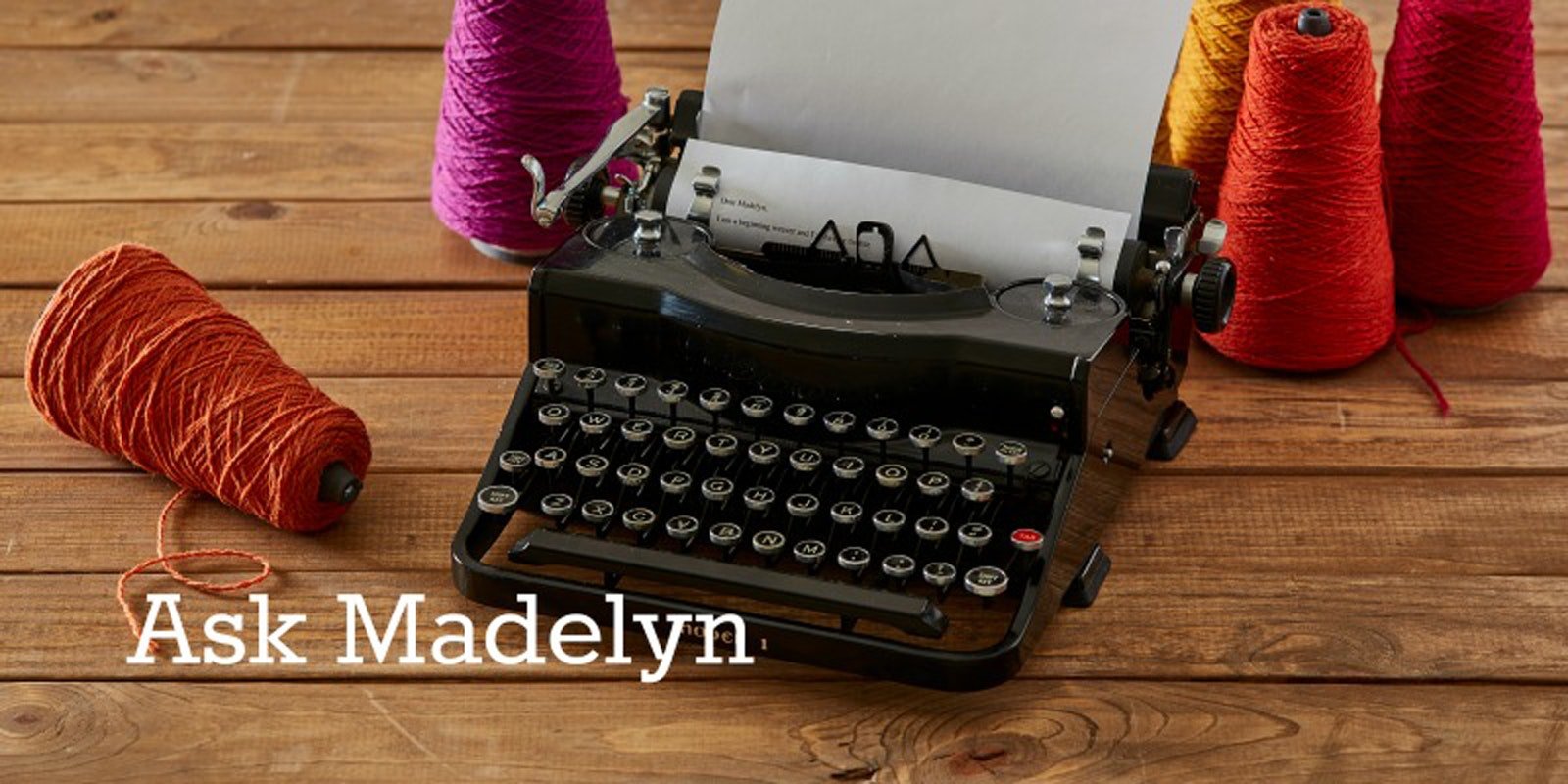Dear Madelyn,
Years ago I was given a great number of heddles called "long eye." They are 12 inches long and the eye is five inches long. Would you explain the use of this type of heddle or direct me to some specific information regarding their use? Thank you,
––Linda Flaherty
Hi Linda!
Long-eyed heddles have a very special purpose (and they are never used with jack looms).
Beyond that, your question is not easy to answer –– it would be much easier to show you! Long-eyed heddles are usually associated with drawlooms. Drawlooms have two "harnesses": a set of shafts at the front that weave the structure and a another set of shafts behind the front shafts that weave the pattern (this harness can also be composed of heddles attached to drawcords instead of arranged on shafts). The front shafts are equipped with long-eyed heddles, the back shafts with the usual size heddle eye. All warp threads go through heddles on both sets of shafts. They go through the long-eyed heddles at the front individually, but they go through the heddles in the back in groups. These groups are like blocks. When a group of threads in the back set are raised, the threads go to the top of the long eyes at the front. When they are lowered at the back, they go to the bottom of the long eyes at the front. The weaver makes the pattern choice with that back set, raising all the warp-emphasis pattern groups, lowering all the weft-emphasis pattern groups, and then treadles the front shafts to weave the structure. The threads are moved out of their up or down positions individually when the front shafts are raised and lowered.
Lots of different structures can be woven with this setup; the treadling of the front shafts depends on the selected weave structure (which is most often damask). Only countermarch or counterbalance looms can provide the necessary action of the front shafts.
There are several places you can go to learn how to use a drawloom.
Hope this helps!
––Madelyn

